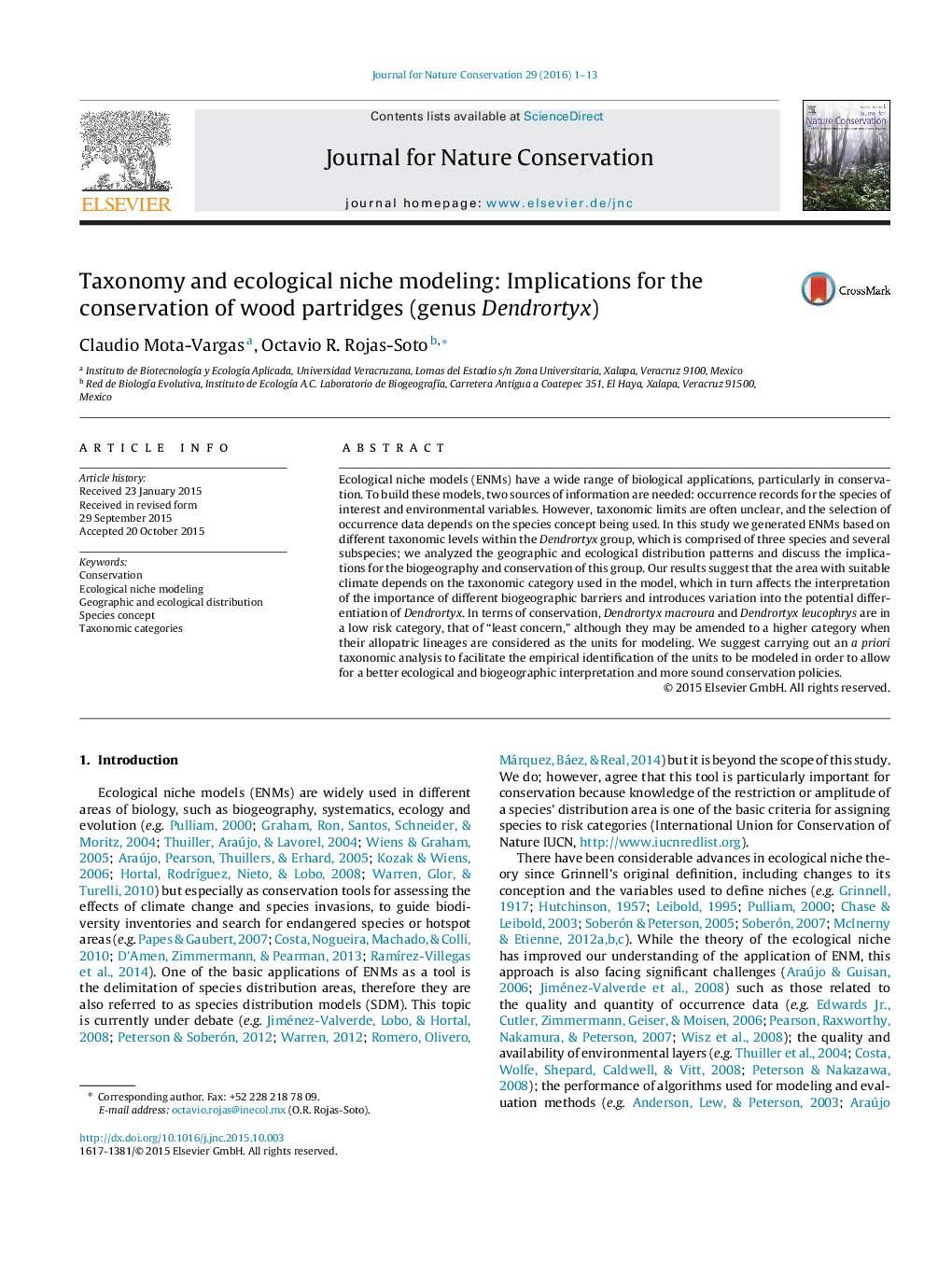| Article ID | Journal | Published Year | Pages | File Type |
|---|---|---|---|---|
| 4399731 | Journal for Nature Conservation | 2016 | 13 Pages |
Ecological niche models (ENMs) have a wide range of biological applications, particularly in conservation. To build these models, two sources of information are needed: occurrence records for the species of interest and environmental variables. However, taxonomic limits are often unclear, and the selection of occurrence data depends on the species concept being used. In this study we generated ENMs based on different taxonomic levels within the Dendrortyx group, which is comprised of three species and several subspecies; we analyzed the geographic and ecological distribution patterns and discuss the implications for the biogeography and conservation of this group. Our results suggest that the area with suitable climate depends on the taxonomic category used in the model, which in turn affects the interpretation of the importance of different biogeographic barriers and introduces variation into the potential differentiation of Dendrortyx. In terms of conservation, Dendrortyx macroura and Dendrortyx leucophrys are in a low risk category, that of “least concern,” although they may be amended to a higher category when their allopatric lineages are considered as the units for modeling. We suggest carrying out an a priori taxonomic analysis to facilitate the empirical identification of the units to be modeled in order to allow for a better ecological and biogeographic interpretation and more sound conservation policies.
